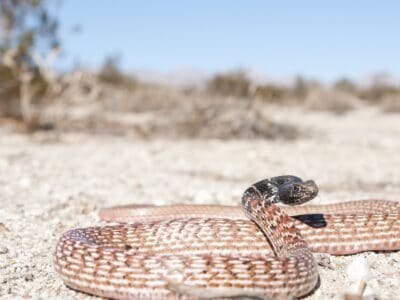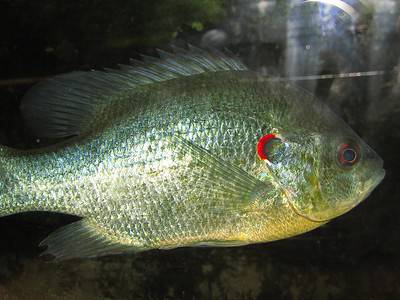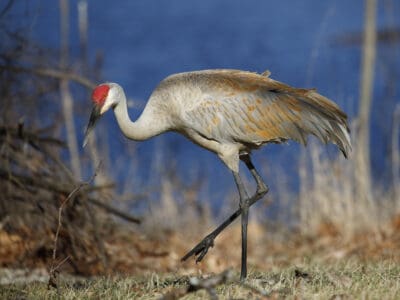Though it’s thought of as a desert state, Arizona has a surprisingly wide variety of climates that support a wide variety of wildlife from rodents to reptiles, birds and large predators be they common and familiar or the rarest and the strange. Here is information about some of the animals in Arizona.
The Official Animals of Arizona

The Ringtail Cat is Arizona’s state animal. It is believed to be related to the raccoon
©Carlos R Cedillo/Shutterstock.com
Arizona doesn’t have an official animal per se, but the official mammal is the ringtail cat, which isn’t a cat at all but is related to the raccoon. Also called the bassarisk, it is smaller than a pet cat, and its tail with its diagnostic black and white rings can be as long as its body.
Official State Bird
Arizona’s state bird is the cactus wren. This bird is only found in the deserts of the southwest and upper Mexico. It’s the United States’ largest wren at 7 to 7.5 inches long. Its plumage is rather a drab brown with white and black patterning, and it has a song like a car engine that won’t turn over. It gets its name because it is perfectly at home among the prickles of saguaro and cholla plants.
By the way, the phoenix, which gives its name to the state capital, is a mythological bird that burns itself to ashes after some long number of years, then is reborn from its own ashes. The city was given the name Phoenix by settlers who built their city on the ashes of an earlier one built by native Americans.
Official State Amphibian
The state amphibian is the Arizona tree frog, also called wright’s mountain tree frog. Pale olive green with a paler ventral area, it can be found in the marshes and around the rivers of Arizona.
Official State Butterfly
Arizona’s state butterfly is the two-tailed swallowtail butterfly. This gorgeous insect has pale Naples yellow wings with black tiger stripes, delicate tails, blue patches, and orange eyespots on the hindwings.
Official State Fish
The official state fish is the Apache trout. This golden trout lives only in the streams and lakes of White Mountain. Though other species of trout have been introduced into Arizona, the Apache is one of only two that is actually native to the state. A popular gamefish, it can grow to 20 inches long but is usually much smaller.
Official State Reptile
Arizona’s state reptile is the Arizona ridge-nosed rattlesnake. Found in the “sky island” just where Arizona meets Mexico, this is a small rattlesnake that grows to only 1 to 2 feet in length. It gets its name from the ridged scales along its nose.
Where To Find The Top Wild Fauna in Arizona

Patagonia Lake is just one of Arizona’s many locations where visitors can admire nature and wildlife
©Gabriel Walter Farmer 1/Shutterstock.com
Much of Arizona’s wildlife can be found in its state parks and trails. The state parks include Catalina, Cattail Cove, Lyman Lake, Lost Dutchman, Patagonia Lake, Lake Havasu, the San Rafael State Natural Area, Tonto Natural Bridge, and the Verde River. These parks are found mostly in the central, southern, and western areas of the state.
Small Mammals
Arizona’s small mammals include kinds of skunks and species of shrew. Some rodents found in Arizona are the American beaver, the North American porcupine, gophers, pocket mice, and kangaroo rats, voles, wood rats, cotton rats, and deer mice. The state is also home to the nutria, a largish, introduced rodent that’s a bit of a pest because of its voracious appetite for vegetation. Other rodents are types of chipmunks, squirrels, and prairie dogs.
Besides the ring-tailed cat, there is also the raccoon and the white-nosed coati. Mustelids are the river otter, weasels, ferrets, and the American badger. The collared peccary or javelina can also be found in Arizona’s state parks.
Deer and Other Ungulates
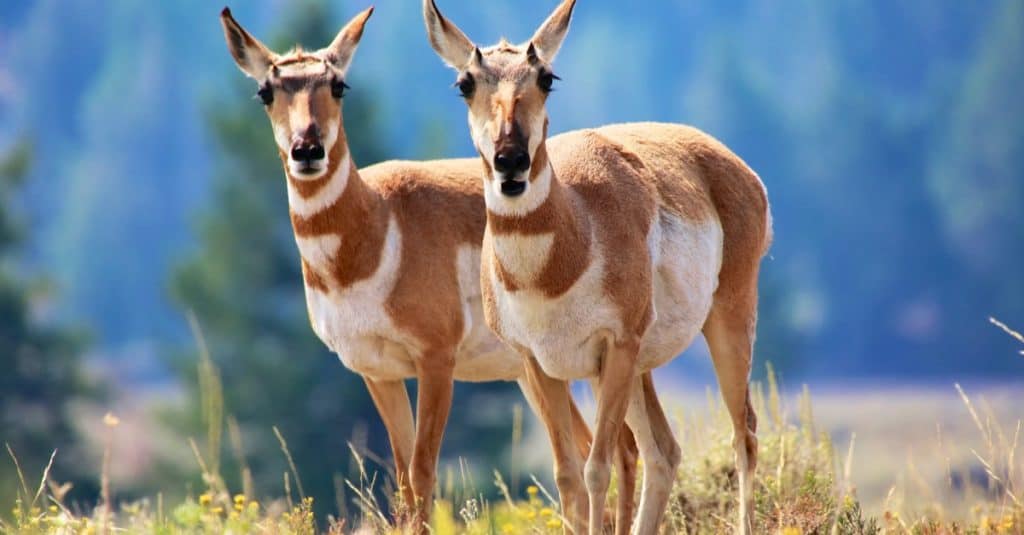
Pronghorn antelopes are one of the many herbivores which call Arizona home
©matthieu Gallet/Shutterstock.com
Mule deer, named for their large ears, and a subspecies of white-tail deer called the Coues whitetail occupy different habitats in Arizona. The mule deer, which is a bit more acclimated to the desert, can be glimpsed at Lost Dutchman and Picacho Peak State Parks, while the whitetail deer can be found in Patagonia State Park and Kartchner Caverns as well as Oracle State Park.
Arizona is also home to the Sonoran pronghorn, bighorn sheep, the American bison, and elks.
Predators

Coyotes are one of Arizona’s key predators
©Mircea Costina/Shutterstock.com
Arizona’s top predators include the coyote, the black bear, mountain lions, lynxes, and ocelots. A visitor might even glimpse a rare Mexican wolf, a subspecies of the gray wolf, or a jaguar. Black bears are seen in Tonto Natural Bridge as well as Slide Rock.
There are also three species of foxes: gray, kit, and red. Of the three of them the gray is the most common and can be found hanging out in mountainous regions or woods. Kit foxes known for their sandy brown fuzzy fur are far more elusive and tend to prefer arid regions.
Birds

Hummingbirds can be found in several parks or backyards
©iStock.com/mbolina
Arizona birds include the state bird, the cactus wren. Birds are of course not confined to the state parks and can be found in city parks and backyards. They include hummingbirds, woodpeckers, warblers, goldfinch, grackles, phoebes, and sparrows. Birds that are found in places such as Dead Horse Ranch and Lyman Lake include waterfowl such as blue herons, black ibis, grebes, egrets, ducks, and geese. Roadrunners, quail, and owls can be glimpsed at Kartchner Caverns. Birds of prey include ospreys and several species of hawk.
The California condor is also seen in Arizona. Though much effort has been put into its conservation, this huge and magnificent bird is still endangered.
Reptiles

The Gila monster is one of America’s rare venomous lizards
©Vaclav Sebek/Shutterstock.com
The chuckwalla is a type of iguana and can be commonly seen in most of Arizona’s state parks. It’s an herbivore that can grow to 16 inches in length and change color to camouflage itself.
The famous Gila monster is known for the lovely patterns on its beaded skin and for being a rare venomous American lizard. It is difficult for a human to be envenomated by one of these robust-bodied lizards since the animal has to hang on and chew, but the venom is used to paralyze its prey. Dinner for the Gila monster includes birds, smaller reptiles, and small mammals such as mice. Gila monsters also eat carrion and eggs.
Arizona has several species of rattlesnake, with the Arizona ridge-nosed rattlesnake being the state reptile. The western diamondback rattler can also be found in most state parks. These snakes get their name because of the keratinous rattles at the ends of their tail that they shake when they feel threatened.
Insects

Arizona is home to a wide range of insects including Monarch butterflies
©iStock.com/Elenathewise
Arizona insects are of course found throughout the state. Besides the beautiful two-tailed swallowtail butterfly is the assassin bug, which has a fang to “assassinate” other insect prey and even prick human skin. Still, people welcome it in their garden as it hunts insect pests. Another insect is the ambush bug, which lies in wait on sunflowers and ambushes bugs that come too near. Other insects are the backswimmer, an aquatic bug that swims on its back, the broken-backed seed bug, a pest whose strange wing formation gives it its name, aphids, stinkbugs, squash bugs, ants, antlions, and water striders. There are many species of flies, wasps, bees, and dragonflies
Lovelier insects include the anise swallowtail butterfly, the Aphrodite fritillary butterfly, the candy-striped leafhopper, the Calleta silkmoth, mourning cloak, and monarch butterflies, the Carolina mantis, the dogbane leaf beetle with its iridescent green carapace, katydids, the goldsmith beetle, and the mottled tortoise beetle. Velvet ants, which are really wasps, are pretty but deliver a powerful sting.
Other Arizona arachnids include many types of spiders, including sac spiders, crab spiders, orb weavers, tarantulas, black widows, brown recluse spiders, house spiders, wolf spiders, the parson spider, and jumping spiders. There are also ticks, centipedes, sowbugs, camel spiders, and scorpions.
Fish

Crappie are abundant in Arizona’s rivers
©iStock.com/bbevren
The Apache trout is not the only trout found in Arizona’s rivers, streams, and lakes. Others include the brook trout, the brown trout, the rainbow trout, and the cutthroat trout, named for the slash of bright red beneath its lower jaw.
Other fish found in Arizona are the Redear sunfish, the roundtail chub, tilapia and bass, walleye and white crappie, Arctic grayling, and bigmouth buffalo. Other fishes are species of dace, suckers, pupfish, spinedace and spikedace, mullet, topminnows, pikeminnows, and woundfin.
The Largest Animal in Arizona

In spite of their immense bulk, bison are amazing athletes and are capable of leaping great heights, swimming, and reaching impressive speeds when running
©iStock.com/Jillian Cooper
The bison is Arizona’s largest animal with populations found in two main locations in the state. The first is Raymond Wildlife Area, a wooded and scrubland refuge under 15,000 acres dominated by sloping plains.
The second is House Rock Ranch. These giant herbivores spend their days munching fresh grass in copious quantities – they’re capable of tucking away 30 lbs or more, per day.
A glimpse at these deceptively placid mammals shows how impressive they are. Males are capable of reaching 6 feet and weighing 2,000 lbs. Their bulk notwithstanding, they are capable of astounding feats of agility. Bisons have been known to leap vertical heights of 6 feet and to achieve speeds of 35 – 40 mph. They are also strong swimmers and are capable of executing quick spins, as well.
The Rarest Animal in Arizona

Mexican gray wolves remain in danger of extinction in Arizona which was once part of their original range
©Nagel Photography/Shutterstock.com
The Mexican gray wolf is one of Arizona’s rarest animals and remains in danger of extinction. The carnivore referred to as “el lobo” is somewhat smaller than its larger gray wolf cousin and also has a darker pelt. Its original range was Northern Mexico, Southeastern Arizona, and Southern New Mexico.
In 1998, 11 wolves which had been raised in captivity were released into the wild in the eastern part of the state. The first wild-born litter arrived four years later in 2002.
More than two decades later after that initial release, the authorities were able to count 12 breeding pairs in the state. Slightly less than the number counted in New Mexico, which was 13.
Zoos in Arizona
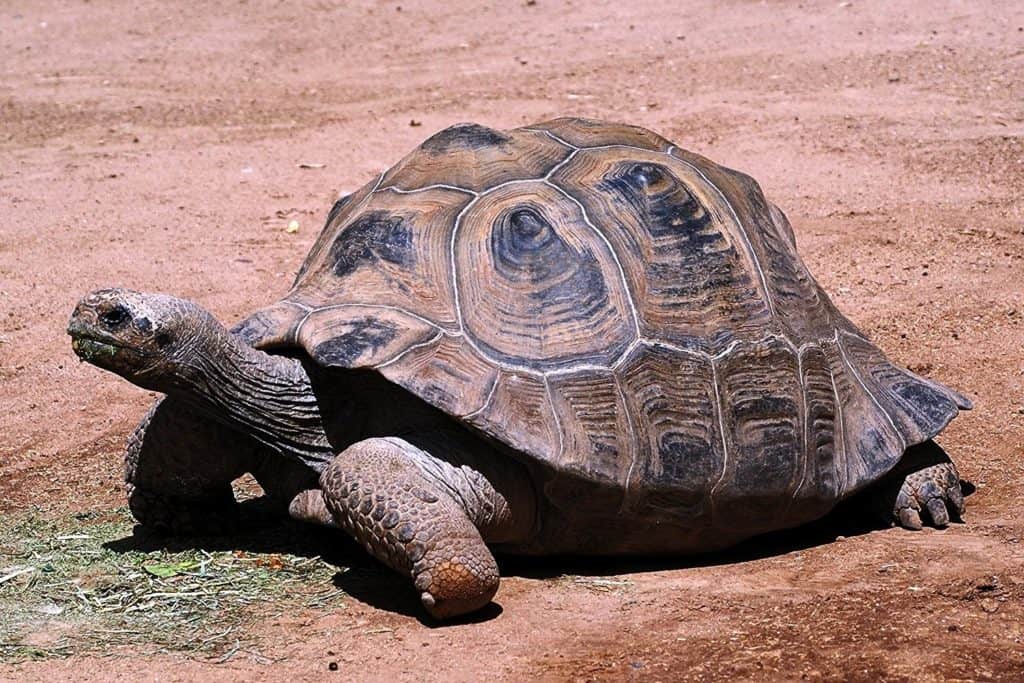
Pheonix Zoo is home to several rare species including this giant tortoise
©5of7 / CC BY-SA 2.0, Flickr – License
Besides its many state parks, people can also see animals in its zoos. They include the Phoenix Zoo, the Wildlife World Zoo, Aquarium & Safari Park in Litchfield Park which has exotic animals such as big cats, antelopes, sea lions, wobbegong sharks, piranhas, and a strange and wonderful albino alligator.
Reid Park in Tucson houses leopards, giant tortoises, and African elephants, and Heritage Park Zoological Sanctuary has animals found in Arizona such as black bears, peccaries, scorpions, pronghorns, and mountain lions.
Wild Animals in Arizona
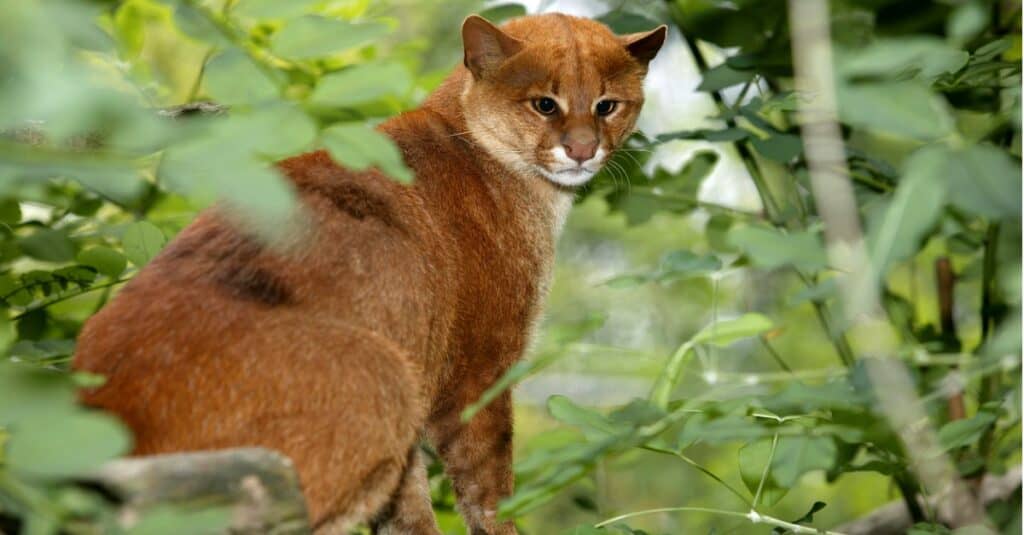
Jaguarundis are solitary by nature and are also diurnal
©slowmotiongli/Shutterstock.com
Besides the animals already named, Arizona is home to the northern Mexican garter snake and the bony-tailed chub which, like most chubs, is endangered. Other wild animals include the Sonora tiger salamander, the southwestern willow flycatcher, the masked bobwhite, and the desert tortoise. The greater roadrunner is actually a type of cuckoo and is common in the state parks. Bats include the pallid bat, the big brown bat, the little brown bat, the Arizona myotis, the western red, and species of long-nosed and free-tailed bats.
The weasel-like jaguarundi which is solitary by nature, but gregarious in captivity, has also been sighted in the state. The feline which is diurnal by nature prefers to live close to the water and supplements its diet with fresh fish.
The Most Dangerous Animals In Arizona Today

Cougar attacks are on the rise in Arizona
©iStock.com/SandmanXX
There are a number of dangerous animals in Arizona. Let’s dive into a few more notable ones:
- American black bear – Though not as aggressive as the grizzly, which has been extirpated in Arizona anyway, the American black bear is still a creature to be careful around. Black bears who have gotten used to humans indirectly or directly feeding them are sometimes aggressive towards them.
- Bark scorpion – This scorpion is considered the most venomous scorpion in all of North America. It’s common in Arizona, and its venom can kill a human if antivenin isn’t administered in time. It looks like its less venomous cousins but is more slender. It’s simply a good idea to avoid handling scorpions altogether. Check out some other types of scorpions in Arizona.
- Rattlesnakes – The rattlesnakes of Arizona can also deliver a bite that can send an adult human to the hospital. As with the bark scorpion, antivenin has saved many a life or prevented long-lasting complications.
- Mountain lions – Mountain lion attacks are uncommon, but they are increasing as more and more humans move into the big cat’s territory. Most people killed by mountain lions are children.
- Bison – Though they are not nearly as aggressive, bad-tempered or vindictive as their cousins the African buffalo, American, and Plains bison can be unpredictable and can charge for no reason and without warning. This is especially true during the rut, which happens in the summer.
Endangered Animals In Arizona

The Mexican spotted owl is the largest owl in North America
©C.M.Corcoran/Shutterstock.com
Like every other state, Arizona is home to creatures that have become endangered due to overhunting, pollution, climate change, and habitat disruption. They include:
- The black-footed ferret – This little weasel is one of the rarest animals in North America, and is, surprisingly, the only ferret that’s native to the continent.
- The Mexican spotted owl – This big owl is the largest in North America and is threatened. It can be identified by its large size, barred gray and brown feathers, and unnervingly large, wholly black eyes.
- The Mexican gray wolf – This wolf is endangered, even though it was reintroduced into Arizona in the 1990s.
- Jaguars – Many people are surprised to know that there are jaguars in Arizona. It is still one of the rarest of the big cats in North America and is considered endangered.
- The black rail – The bird which can also be found in Florida and California in significant numbers is noted for its dark plumage and short beak. It is also nocturnal by nature and prefers sprinting through heavy vegetation, rather than taking to the air.
Lakes in Arizona

Arizona’s Saguaro Lake is a popular bass fishing destination
©iStock.com/Monica Lara
Arizona lakes are well known for their fishing and recreational opportunities. In addition to natural lakes, a number of reservoirs such as Lake Mead have expanded the number of lakes in the state. Popular fishing lakes in Arizona include Bartlett Lake, which has large and smallmouth bass in addition to black crappie, and bluegill. Another popular fishing lake is Saguaro Lake, which is known for its bass fishing.
There is also Canyon Lake which lies east of Phoenix, the state’s capital. Named for the red canyon walls that rise up around it, this body of water is home to a wide variety of fish including bass (large and smallmouth) bluegill, carp, channel catfish, crappie, sunfish, and yellow bass. Check out the biggest lakes near Pheonix, Arizona.
Native Plants in Arizona

The Arizona spinystar is known for its beautiful purple and pink flowers with golden centers
©BT Images/Shutterstock.com
Despite ranking 14th in population and 6th in terms of land mass of all states in the U.S., Arizona still boasts of more than 4000 indigenous plant varieties, such as cacti, wildflowers, shrubs, and trees that can flourish in its predominantly arid regions.
Examples include the Arizona Ash which can grow up to 30 or even 50 feet and blooms between March and May and the Arizona spinystar, a cactus known for its beautiful purple and pink flowers with golden centers which bloom between April and August. The beaver tail prickly pear is also another cactus with pretty flowers in a vivid pink which blossom between February and June.
The Flag of Arizona

The flag of Arizona represents the 13 original colonies of the United States on its upper half
©iStock.com/selensergen
The flag of Arizona was created in 1910 when the Arizona Territory rifle team was due to participate in a Ohio competition and needed a flag. And though it was designed quickly it is one of the most distinctive and colorful flags in use today.
The Arizona state flag has a solid blue bottom half paying tribute to the flag of the United States of America and a top half that has thirteen alternating red and yellow rays representing the thirteen original colonies of the US, with the colors of the rays referring to the Spanish flags carried by the explorer Coronado when he came to Arizona in 1540. The gold star shown just below the horizon of the rays symbolizes the setting sun and the color gold is for Arizona’s copper production which is the largest in the US.
Arizonan Animals

Admiral Butterfly
Stunningly beautiful wings

Allosaurus
Allosaurus is the official state fossil of Utah because of the abundant number of fossils found in the state.
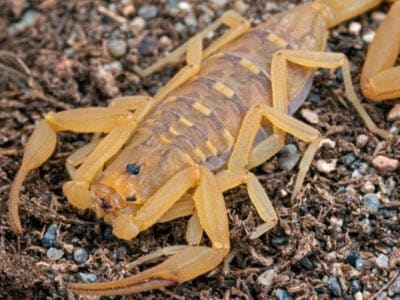
Arizona Bark Scorpion
Under UV light they glow a bright blue or green, making them easy to spot.

Arizona Black Rattlesnake
Female Arizona black rattlesnakes sometimes share parenting duties.

Arizona Blonde Tarantula
They are covered in thousands of fuzzy blonde hairs.

Arizona Coral Snake
The Arizona coral snake is among the most venomous snakes of North America.

Banded Water Snake
Some water snakes defend themselves violently.

Beewolf wasp
They hunt bees
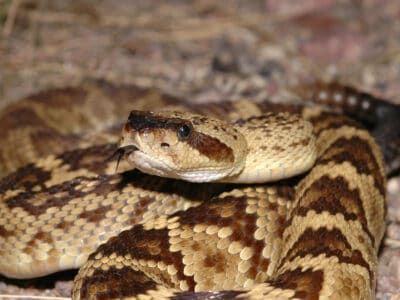
Black-Tailed Rattlesnake
One of the most beautiful rattlesnakes, they have solid black tails.
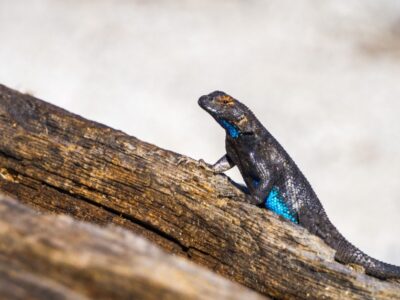
Blue Belly Lizard
This species can detach its tail to escape from predators
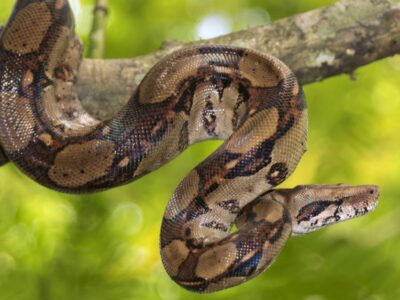
Boas
Boas are considered primitive snakes and still have vestigial legs, called spurs.

Burrowing Owl
The burrowing owl lives in underground burrows

Cactus Mouse
In hot temperatures, they lower their metabolism and become inactive to reduce the amount of water they need to survive

Cactus Wren
It is the largest wren in the United States
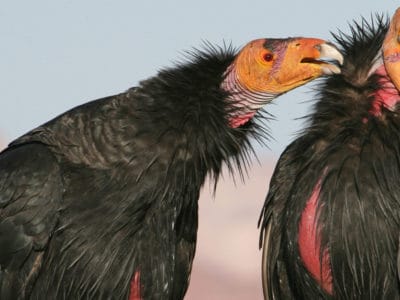
California Condor
They are the largest bird in North America
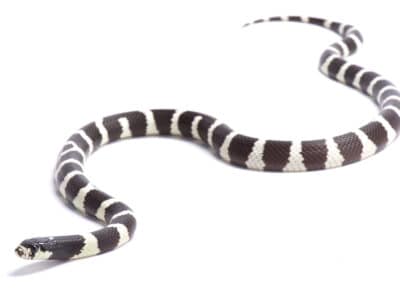
California Kingsnake
A full-grown California kingsnake can be about 3.5 feet long, though there are some cases in Mexico of the snake being almost twice this size.
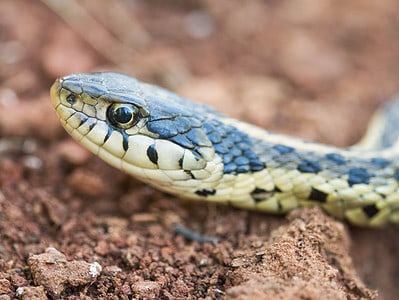
Checkered Garter Snake
It has the ability to expel a stinky liquid from its body as a way to make predators (and humans) retreat!
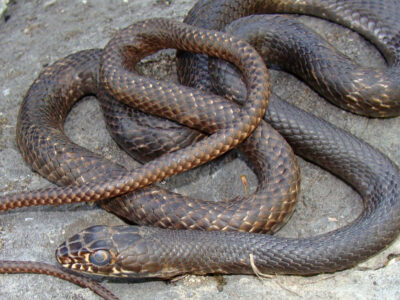
Coachwhip Snake
Coachwhip snakes pose little danger to people

Common Yellowthroat
The Common Yellowthroat stays close to the ground and uses stealth to survive!

Costa’s Hummingbird
Costa's Hummingbird males have iridescent purple feathers on their heads and necks.

Coues Deer
Coues deer are smaller than other white-tail deer, following Bergmann's Rule that average size is greater for animals farther from the equator.
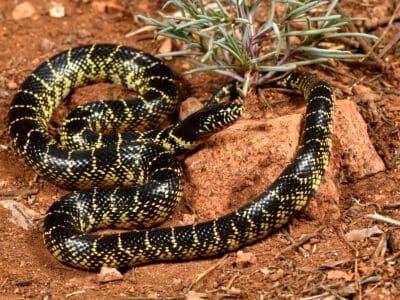
Desert Kingsnake
The desert kingsnake rolls over and plays dead when it feels threatened.

Dilophosaurus
Dilophosaurus was the largest predatory dinosaur in North America during the Early Jurassic Epoch of the Jurassic Period.

Diplodocus
Their long tales could have been used as a whip!

Flea
Adult fleas can jump up to 7 inches in the air
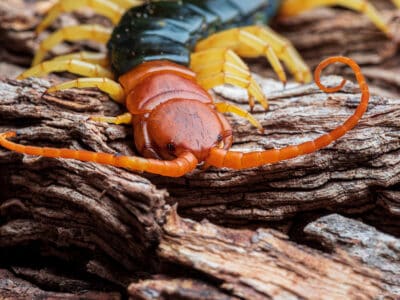
Giant Desert Centipede
They are the largest centipede in North America
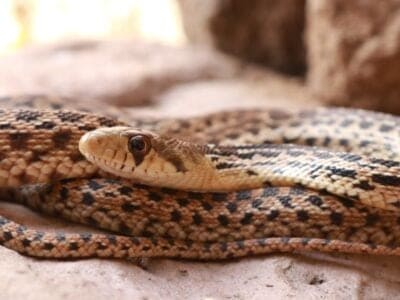
Gopher Snake
Gopher snakes can reach up to 9 feet long.
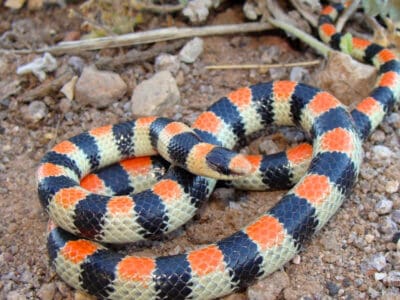
Ground Snake
It’s sometimes called a miter snake due to the marking on its head that looks like a bishop’s miter

Harris’s Hawk
Their vision is eight times better than a human's

Jackrabbit
They can run as fast as 45 mph.
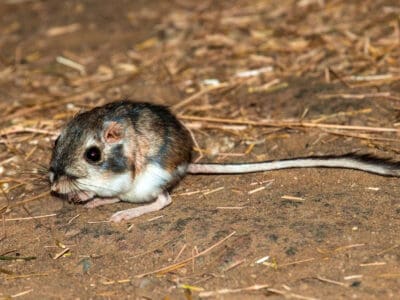
Kangaroo Mouse
The Kangaroo Mouse is a tiny mouse that stands and hops around on its hind legs, much like a kangaroo.
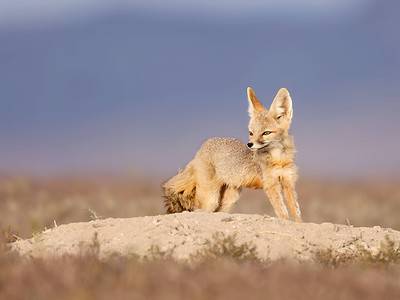
Kit Fox
The kit fox is the smallest canid in North America.
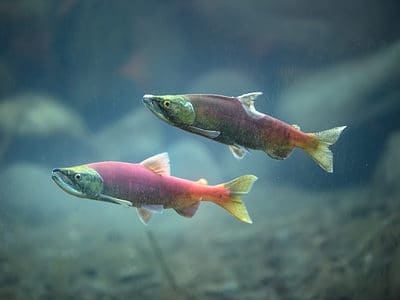
Kokanee Salmon
A non-anadromous type of sockeye salmon

MacGillivray’s Warbler
The complicated story of how MacGillivray’s Warblers got their name involves three ornithologists, a physician and a compromise.

Massasauga
The name “Massasauga” comes from the Chippewa language, meaning “Great River Mouth”.

Mealybug
They have a symbiotic relationship with ants.

Mexican Eagle (Northern crested caracara)
The northern crested caracara mates for life with its partner
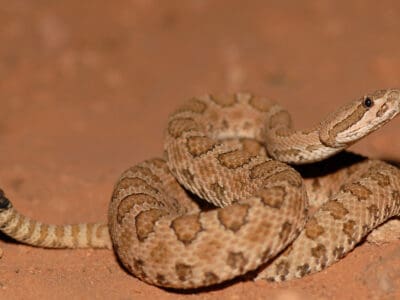
Midget Faded Rattlesnake
They're also called horseshoe rattlesnakes thanks to the shape of their markings.

Mockingbird
Mockingbirds are incredible mimics that can learn hundreds of songs!
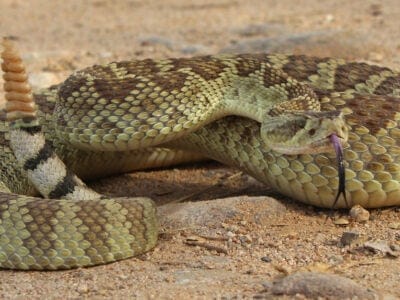
Mojave Rattlesnake
"The Mojave rattlesnake is the most venomous rattlesnake in the world."

Morpho Butterfly
Collectors prize them for their bright wings

Nematode
Nematodes range in size from 1/10 of an inch to 28 feet long

Orb Weaver
Females are about four times the size of males

Owl
The owl can rotate its head some 270 degrees
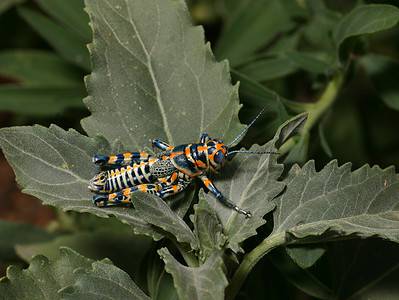
Rainbow Grasshopper (Dactylotum bicolor)
They have strikingly bright colors

Rat Snakes
Rat snakes are constrictors from the Colubridae family of snakes.

Rooster
Will mate with the entire flock!
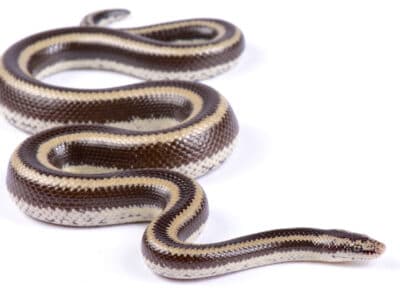
Rosy Boa
One of the few snakes that naturally comes in a rainbow of colors!

Smallmouth Bass
A fierce fighter!

Smilosuchus
The biggest species in the Smilosuchus genus, S. gregorii, was the largest known reptile of its time, reaching a length of up to 39 feet.

Smokybrown Cockroach
Has up to 45 eggs per egg case
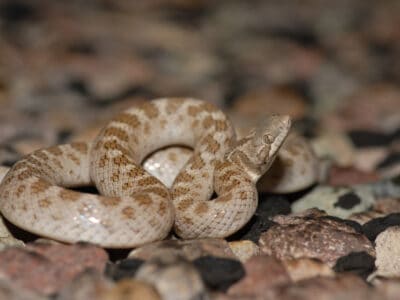
Texas Night Snake
The Texas night snake has vertical pupils to help it see better at night.
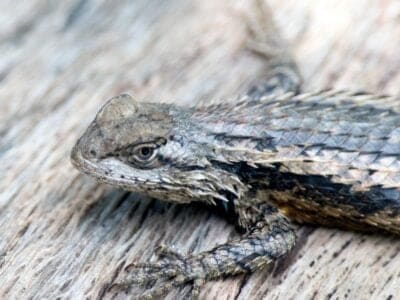
Texas Spiny Lizard
They hold push-up competitions!

Tiger Rattlesnake
These rattlesnakes have the smallest heads of any rattlesnake.

Tree Cricket
They make music with their wings
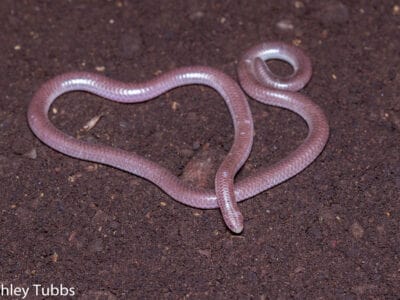
Western Blind Snake
Western blind snakes are flourescent in black light!

Western Diamondback Rattlesnake
They replace their fangs 2-4 times per year!

Whiptail Lizard
Many whiptail species reproduce asexually.
Arizonan Animals List
- Admiral Butterfly
- Allosaurus
- Arizona Bark Scorpion
- Arizona Black Rattlesnake
- Arizona Blonde Tarantula
- Arizona Coral Snake
- Banded Water Snake
- Beewolf wasp
- Black-Tailed Rattlesnake
- Blue Belly Lizard
- Boas
- Burrowing Owl
- Cactus Mouse
- Cactus Wren
- California Condor
- California Kingsnake
- Checkered Garter Snake
- Coachwhip Snake
- Common Yellowthroat
- Costa’s Hummingbird
- Coues Deer
- Desert Kingsnake
- Dilophosaurus
- Diplodocus
- Dire Wolf
- Flea
- Giant Desert Centipede
- Gopher Snake
- Ground Snake
- Harris’s Hawk
- Jackrabbit
- Kangaroo Mouse
- Kit Fox
- Kokanee Salmon
- MacGillivray’s Warbler
- Massasauga
- Mealybug
- Mexican Eagle (Northern crested caracara)
- Midget Faded Rattlesnake
- Milk Snake
- Mockingbird
- Mojave Rattlesnake
- Morpho Butterfly
- Nematode
- Orb Weaver
- Owl
- Rainbow Grasshopper (Dactylotum bicolor)
- Rat Snakes
- Red Racer Snake
- Redear Sunfish
- Rooster
- Rosy Boa
- Sandhill Crane
- Sidewinder
- Smallmouth Bass
- Smilosuchus
- Smokybrown Cockroach
- Styracosaurus
- Swallowtail Butterfly
- Texas Night Snake
- Texas Spiny Lizard
- Tiger Rattlesnake
- Tree Cricket
- Western Blind Snake
- Western Diamondback Rattlesnake
- Whiptail Lizard
Animals in Arizona FAQs (Frequently Asked Questions)
What animal is Arizona known for?
If Arizona is known for an animal, it is most likely the roadrunner, a bird known for its preference for running on land as opposed to flying. Some of these birds can run faster than 20 miles per hour. The bird is an omnivore famous for subduing and eating rattlesnakes, and the subject of a long-running Warner Brothers cartoon.
How many snakes live in Arizona?
Arizona is home to around 40 types of snakes with the highest number of venomous species in the United States. In total, there are 13 different rattlesnake species in the state.
What animals in Arizona can kill you?
Unfortunately, there are a few animals in Arizona that are so dangerous that they can kill you. Among them are the bark scorpion, the mountain lion, the jaguar, though jaguars are rare, the American bison, rattlesnakes, and the black bear. People are also stung to death by bees and wasps every year.
What big animals are in Arizona?
Big animals that live in Arizona include black bears, pronghorn deer, elk, bison, and bighorn sheep.
What exotic animals live in Arizona?
The exotic animals that don’t live in Arizona’s zoos were introduced into the state. Some of them are the Ring-necked pheasant, species of trout, the chukar, which is a type of quail, the common snapping turtle, and the Rocky Mountain elk.
What is the most dangerous animal in Arizona?
The most dangerous animals in Arizona are hymenopteran insects such as hornets, wasps, and bees. They are responsible for more deaths in the state than even the hungriest large predators. Death usually comes when a person is allergic to the insect’s sting, is stung many times, and can’t find medical help in time when they go into anaphylactic shock.
What tarantulas live in Arizona?
Arizona is home to tarantulas like the Arizona blonde tarantula, Texas brown tarantula, and Grand Canyon black tarantula.





